
Jean-Claude Camille François Van Varenberg, known professionally as Jean-Claude Van Damme, is a Belgian martial artist and actor. Born and raised in Brussels, his father enrolled him in a Shotokan karate school at the age of ten, which led Van Damme to hold the rank of 2nd-dan black belt in karate, and compete in several karate and kickboxing competitions. As a teenager, he won the middleweight championship of the European Professional Karate Association in 1979 and the Mr. Belgium bodybuilding title in 1978. With the desire of becoming an actor in Hollywood, he moved to the United States in 1982, where he worked on several films, until he got his break as the lead in the martial arts film Bloodsport (1988).
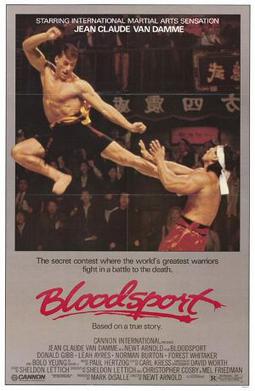
Bloodsport is a 1988 American martial arts film directed by Newt Arnold. The film stars Jean-Claude Van Damme, with a supporting cast of Leah Ayres, Forest Whitaker, Donald Gibb, Roy Chiao, and Bolo Yeung. The film centers on Frank Dux, a United States Army Captain and ninjutsu practitioner who competes in an underground full-contact martial arts tournament called the Kumite in Hong Kong. Based on Dux's real-life claims, the film was marketed as a true story. It was one of Van Damme's first lead roles and showcased his abilities, launching his career as a mainstream action star.

The Quest is a 1996 American martial arts adventure film starring and directed by Jean-Claude Van Damme, in his directorial debut. It co-stars Roger Moore, James Remar and Janet Gunn. The plot, set in 1925, follows New York thief Chris Dubois who is sold into slavery by Lord Edgar Dobbs (Moore) and, after receiving Muay Thai training in Siam, enters an ancestral martial arts tournament in Tibet to earn back his freedom.

The King of the Kickboxers is a 1990 martial arts film directed by Lucas Lowe and starring Loren Avedon as Jake Donahue and Billy Blanks as Khan.
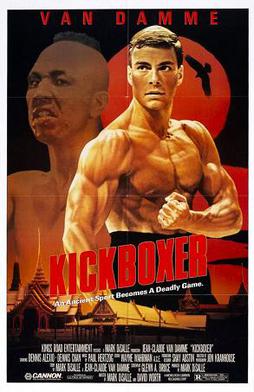
Kickboxer is a 1989 American martial arts film directed by David Worth and starring Jean-Claude Van Damme. Former world kickboxing champion Dennis Alexio is also featured. The plot revolves around Kurt Sloane seeking revenge on the fearsome kickboxing champion Tong Po who paralyzed his brother Eric Sloane. The film is regarded as the first movie to bring Muay Thai to a global audience.

Lionheart is a 1990 American martial arts film directed by Sheldon Lettich, starring Jean-Claude Van Damme, Deborah Rennard, Harrison Page, Lisa Pelikan and Brian Thompson. It also features the acting debut of Ashley Johnson. Van Damme plays a French Foreign Legionnaire stationed in Africa, who must desert to the United States and enter the underground fighting circuit to raise money for his murdered brother's family.

Donald Glen Wilson, nicknamed "The Dragon", is an American martial artist, former professional kickboxer, and actor. An 11-time world champion who scored 47 knockouts in four decades, he has been called by the STAR System Ratings as "perhaps the greatest kickboxer in American history. He has disposed of more quality competition than anyone we've ever ranked". In 2015, he was inducted into the International Sports Hall of Fame.
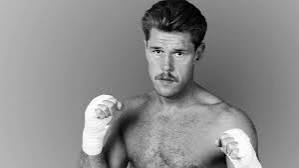
Robert Diem Kaman was a Dutch nine-time kickboxing and Muay Thai world champion. He was often called "Mr. Low Kick" because of his feared low kicks which he used to set up his devastating offensive attacks.
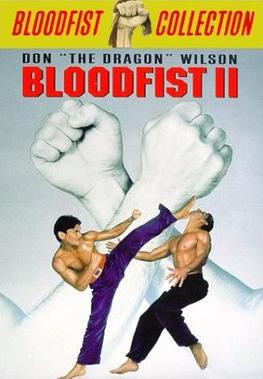
Bloodfist II is a 1990 American martial arts action film directed by Andy Blumenthal and starring Don "The Dragon" Wilson, Kris Aguilar, and Ronald Asinas. It was written by Catherine Cyran.

Bloodfist III: Forced to Fight is a 1992 American martial arts crime action film directed by Oley Sassone and starring Don "The Dragon" Wilson, Richard Roundtree, and Gregory McKinney. It was written by Allison Burnett. It was the final film in the series to be released theatrically, as the other five sequels went straight-to-video.

White Wolves II: Legend of the Wild is a 1996 American coming-of-age survival drama film directed by Terence H. Winkless and starring Ele Keats, Elizabeth Berkley and Jeremy London. It is the second straight-to-video sequel to A Cry in the Wild. The plot follows a group of troubled teenagers trying to survive in the wilderness of the Cascade Mountains.

Scott Edward Adkins is a British actor and martial artist. He gained prominence with his villainous portrayal of the Russian prison fighter Yuri Boyka in the American martial arts film Undisputed II: Last Man Standing (2006), a role he reprised in its sequels Undisputed III: Redemption (2010), which won him an Action on Film Award for Breakout Action Star, and Boyka: Undisputed (2017), which won him a Jackie Chan Action Movie Award for Best Action Movie Actor.
Terence H. Winkless is an American producer, director, actor and writer of motion pictures and television, and a cast member of The Banana Splits Adventure Hour, playing Bingo the Gorilla, also a cast member in Trade Routes, and Goreyan Nu Daffa Karo, among others.

Kickboxer 2 is a 1991 American martial arts film directed by Albert Pyun and written by David S. Goyer. The film is the second entry into the Kickboxer film series, and stars Sasha Mitchell in the role of David Sloan, the brother of Kickboxer's lead character Kurt, portrayed by Jean-Claude Van Damme.
New Concorde (NC) is an American film distribution company founded by Roger Corman. NC got its start in 1983 when Corman formed the production and distribution Concorde-New Horizons (CNH) as one of the first production companies to develop and take advantage of video as a distribution tool.
Michel Qissi is a Moroccan Belgian actor, filmmaker, and martial artist best known for his action films. Qissi is the co-founder of The World Cinema Combat Federation (WCCF), an organization he formed with Grand Master Beom Jhoo Lee which teaches fight choreography in filmmaking.
Dennis Alexio vs. Branko Cikatić was a heavyweight kickboxing bout that took place at the Thomas & Mack Center in Las Vegas, Nevada, US, on March 16, 1992, which ended in a controversial technical draw.
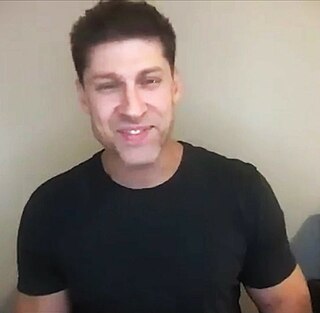
Alain Moussi is a Canadian actor, stuntman, and martial artist trained in jujitsu, kickboxing, and karate. He plays the lead role of Kurt Sloane in the reboot of the Kickboxer series, Kickboxer: Vengeance (2016) and Kickboxer: Retaliation (2018), a role that was originated by Jean-Claude Van Damme, who portrays his mentor in the films. Moussi also played the lead role in the action film Jiu Jitsu (2020), the role of Charlie Nash in the web series Street Fighter: Resurrection (2016), and Batman in the first season of the television series Titans (2018).
Concorde Anois was a short lived film production company based in Ireland that operated in the late 1990s. It was an offshoot of Roger Corman's Concorde Pictures. Anois is the Irish language word for 'now'.
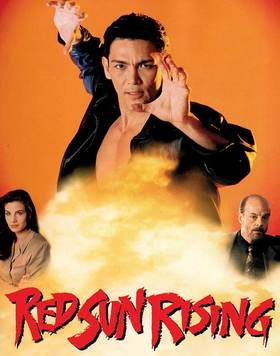
Red Sun Rising is a 1994 American martial arts action film directed by Francis Megahy and starring Don "The Dragon" Wilson, James Lew, Terry Farrell, Mako, Michael Ironside and Edward Albert. Wilson plays a Japanese cop who travels to Los Angeles and teams up with a reluctant American counterpart (Farrell) to track down the gang responsible for the murder of his partner, whose hitman (Lew) is an expert in the ancient art of the death touch. The full title, as it appears on the title card, is Red Sun Rising: Based on the Legend of the Death Touch.















